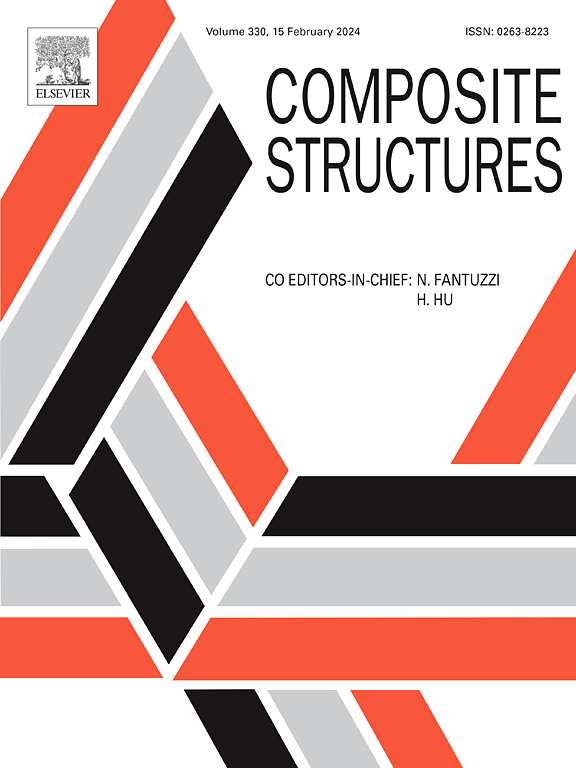基于神经网络的非均匀四手蜂窝变形反设计
IF 6.3
2区 材料科学
Q1 MATERIALS SCIENCE, COMPOSITES
引用次数: 0
摘要
实现具有期望变形的蜂窝结构的有效逆设计的挑战一直存在。为了解决这个问题,引入了一个包括两个神经网络的机器学习框架,其中一个用于敏感性分析和数据集生成,而另一个用于逆设计。利用Python脚本对四手性蜂窝结构进行了参数化建模,并用有限元软件对其进行了分析。利用有限元法构造了单元胞参数映射到蜂窝变形的数据集,用于训练前向神经网络,其r平方值为0.9680。在此基础上,通过灵敏度分析,选择4个高敏感参数进行反设计。然后,创建降维数据集,训练平均r平方值为0.9909的逆神经网络。最后,进行了实验验证,证明了在设计领域内的良好一致性。这种方法为定制具有所需变形的蜂窝结构提供了有希望的潜力,同时也使具有定制特性的超材料的逆设计成为可能。本文章由计算机程序翻译,如有差异,请以英文原文为准。
Neural networks based inverse design of inhomogeneous tetrachiral honeycombs for desired deformation
The challenge of achieving efficient inverse design for honeycomb structures with desired deformations has persisted. To address this, a machine learning framework including two neural networks is introduced, with one used for sensitivity analysis and dataset generation, while the other for inverse design. A tetrachiral honeycomb structure is parametrically modeled using Python scripts and subsequently analyzed with finite element method (FEM) software. A dataset mapping unit cell parameters to honeycomb deformations is fabricated by FEM for training a forward neural network, which has an R-squared value of 0.9680. Based on this trained neural network, four high sensitive parameters were selected for inverse design by sensitive analysis. Then, a dimension-reduced dataset is created to train an inverse neural network with an mean R-squared value of 0.9909. Finally, experimental verifications were performed, which demonstrates an excellent agreement within the design domain. This approach offers promising potential for tailoring honeycomb structures with desired deformation, while also enabling the inverse design of metamaterials with customized properties.
求助全文
通过发布文献求助,成功后即可免费获取论文全文。
去求助
来源期刊

Composite Structures
工程技术-材料科学:复合
CiteScore
12.00
自引率
12.70%
发文量
1246
审稿时长
78 days
期刊介绍:
The past few decades have seen outstanding advances in the use of composite materials in structural applications. There can be little doubt that, within engineering circles, composites have revolutionised traditional design concepts and made possible an unparalleled range of new and exciting possibilities as viable materials for construction. Composite Structures, an International Journal, disseminates knowledge between users, manufacturers, designers and researchers involved in structures or structural components manufactured using composite materials.
The journal publishes papers which contribute to knowledge in the use of composite materials in engineering structures. Papers deal with design, research and development studies, experimental investigations, theoretical analysis and fabrication techniques relevant to the application of composites in load-bearing components for assemblies, ranging from individual components such as plates and shells to complete composite structures.
 求助内容:
求助内容: 应助结果提醒方式:
应助结果提醒方式:


